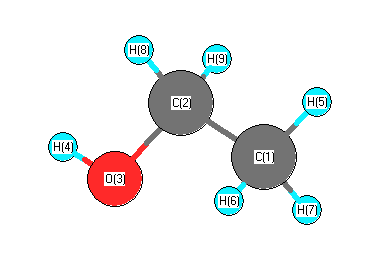.
| squib |
reference |
DOI |
| 1974Hel/Hel(II/6) |
Hellwege, KH and AM Hellwege (eds.). Landolt-Bornstein: Group II: Volume 6 Molecular Constants from Microwave, Molecular Beam, and Electron Spin Resonance Spectroscopy Springer-Verlag. Berlin. 1974. |
10.1007/b19951 |
| 1975Dur/Buc:988 |
JR Durig, WE Bucy, CJ Wurrey, LA Carreira "Raman Spectra of Gases XVI. Torsional Transitions in Ethanol and Ethanethiol" J. Phys. Chem. 79(10) 988, 1975 |
10.1021/j100577a009 |
| 1980Kak/Qua:4300 |
RK Kakar, CR Quade "Microwave rotational spectrum, and internal rotation in gauche ethyl alcohol" J. Chem. Phys. 72(8), 4300, 1980 |
10.1063/1.439723 |
| 1980Kak/Qua:4300-4307 |
RK Kakar, CR Quade "Microwave rotational spectrum and internal rotation in gauche ethyl alcohol" J. Chem. Phys. 72, 4300 (1980) |
10.1063/1.439723 |
| 1984Gra/Gub |
CG Gray, KE Gubbins "Theory of molecular fluids. Volume 1:Fundamentals" Clarendon Press, Oxford 1984 |
|
| 1998Cou/Bou:5789 |
Coussan, Bouteiller, Perchard, Zheng, Rotational Isomerism of Ethanol and Matrix Isolation Infrared Spectroscopy, J. Phys. Chem. A, Vol. 102, #29, pgs. 5789-5793 |
10.1021/jp9805961 |
| Gurvich |
Gurvich, L.V.; Veyts, I. V.; Alcock, C. B., Thermodynamic Properties of Individual Substances, Fouth Edition, Hemisphere Pub. Co., New York, 1989 |
|
| webbook |
NIST Chemistry Webbook (http://webbook.nist.gov/chemistry) |
10.18434/T4D303 |












